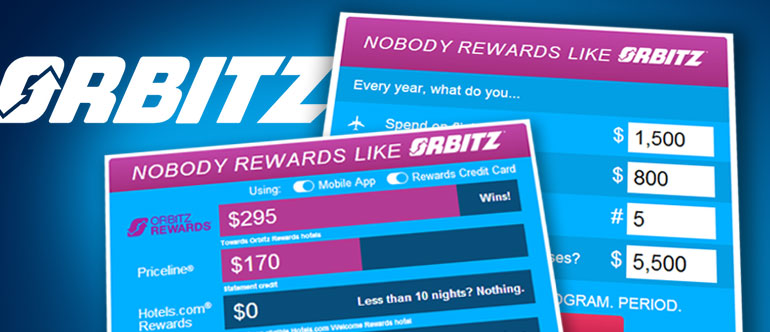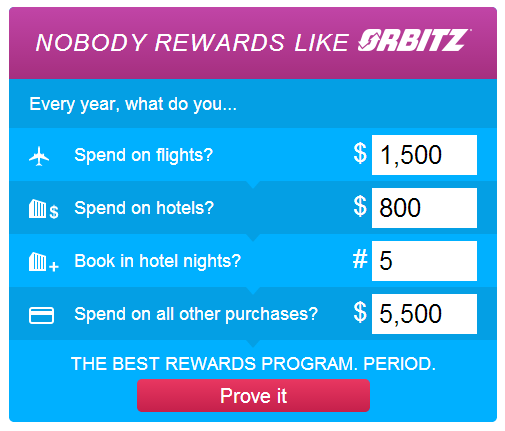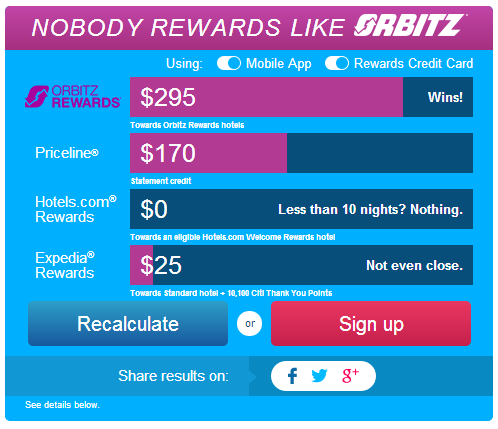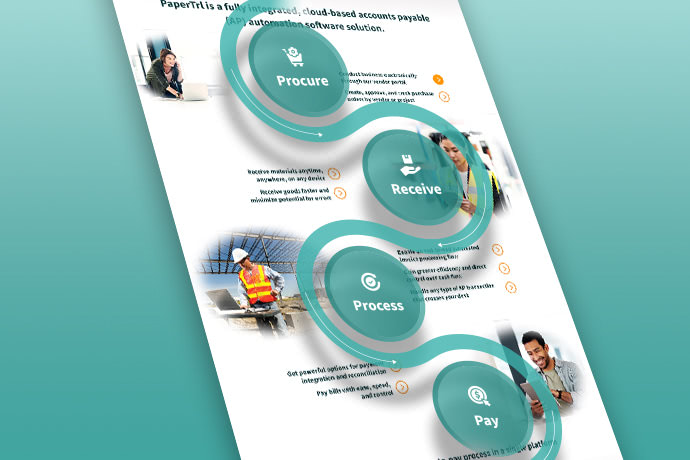At-A-Glance: Orbitz Rewards Visa

For almost as long as they’ve existed, credit card rewards programs have been closely connected to the travel industry. In fact, credit cards and airline frequent-flyer programs “grew up” together and continue to have many close alliances, most notably in the form of airline co-brand credit cards that many consumers still use to rack up miles while on the ground. Along with hotel co-brand cards, these payment products have been a mainstay of the travel industry for decades.
But there is also a new breed of co-brand travel credit cards, and it recently got a new player. Discount travel site Orbitz.com recently launched the new Orbitz Rewards Visa. Orbitz has a loyalty program where customers can earn up to 5 percent in “Orbucks” on hotel bookings and 2 percent on flights. The Orbitz Rewards Visa card simply accelerates that program:
- 5 percent extra in Orbucks on Orbitz bookings (so, cumulatively, up to 10 percent on hotel bookings and 7 percent on flights) and
- 2 percent in Orbucks on all other purchases.
There is also a $50 activation bonus that’s awarded after $200 is spent on the account. The card has no annual fee and – important for travelers – no foreign transaction fees.
To the uninitiated consumer, it takes a minute to think about how travel spending on the card will equate to Orbucks and ultimately travel savings. Luckily, the folks at Orbitz were smart enough to add this handy calculator to its site:

OK, this I understand: if I take one trip this year, I can quickly think about what the airfare will be, what hotel rate I’ll be looking for and how many nights I’ll be staying. I can plug that in along with other purchases, and there it is:

OK, almost $300 in rewards! That seems pretty good, right?
However, there are a few clarifications needed. For example, you only get that level of reward when you book with the card and use the mobile app, as opposed to the website. The program’s base earn is 3 percent on hotels and 1 percent on flights. Then there’s an extra 2 percent for each when booking through mobile and the extra 5 percent for using the card (3+2+5 = “up to 10”). It’s complex, but this calculator makes it easy to understand what you get.
And just what does that $295 get you? It can be only used to lower the cost of future hotel bookings made through Orbitz, which means this is a valuable, but limited use rewards currency.
What really caught my eye about this calculator was the direct, head-to-head comparison with other online travel booking sites. Orbitz is not taking on the whole travel industry; instead, it is taking on its direct competitors: Priceline, Hotels.com and Expedia. With this card, Orbitz is positioning itself as the most rewarding online booking site. (It’s worth noting that while these three competitors all have loyalty programs, only two have co-brand credit cards: the Priceline Rewards Visa card and the Citi Expedia World MasterCard.)
This is a really interesting and very smart approach. Travel rewards programs is a crowded field. In addition to numerous co-brands, there are “independent” travel rewards credit cards, like Capital One Venture and U.S. Bank FlexPerks. There are a lot of players competing for travel loyalty, and Orbitz seems to have decided that it’s best to play to its base and stick to a smaller sub-segment of travelers. It may never get the airline or hotel loyalists, so why bother?
In a busy field, often the best option is to find a niche and focus on that first. If anything, Orbitz could do more to play up the claim that “Nobody Rewards Like Orbitz” in other parts of the creative. This handy (and well done) calculator clearly shows how it is far ahead of its competition. It makes a very bold claim – “The Best Rewards Program. Period.” – and then backs it up with an even bolder call to action that says, simply, “Prove it.”
And Orbitz does prove it, showing that a very simple online tool can be used to bring a value proposition to life and highlight key competitive advantages.






